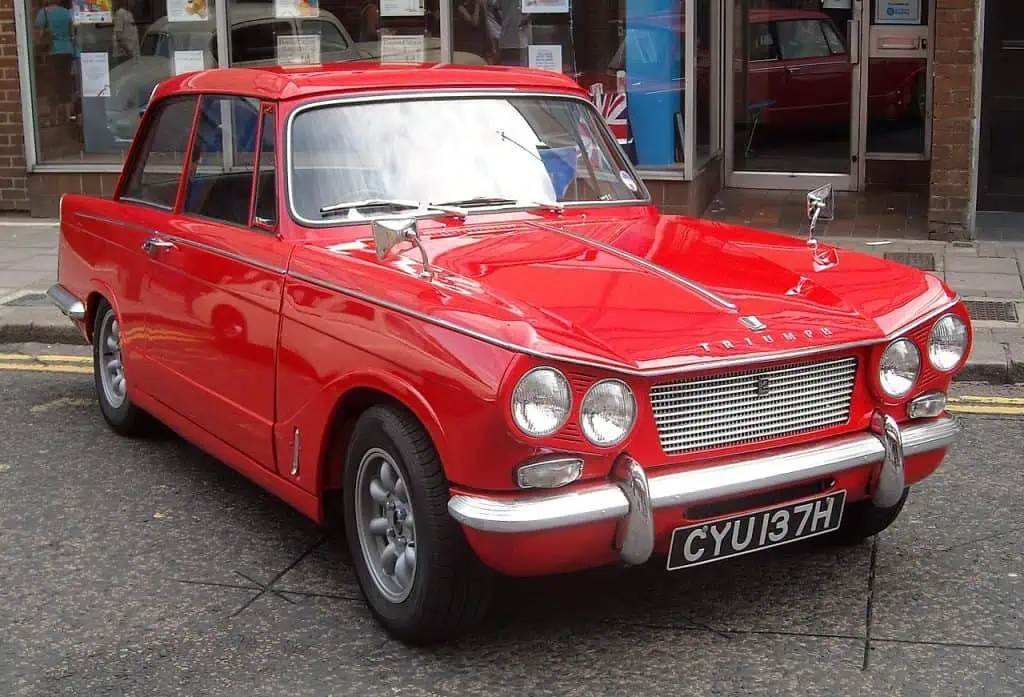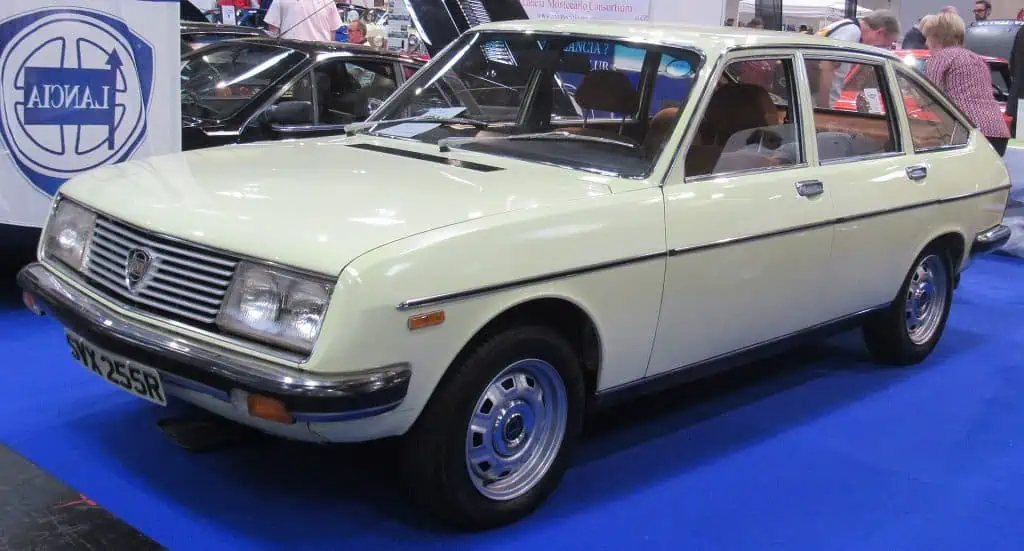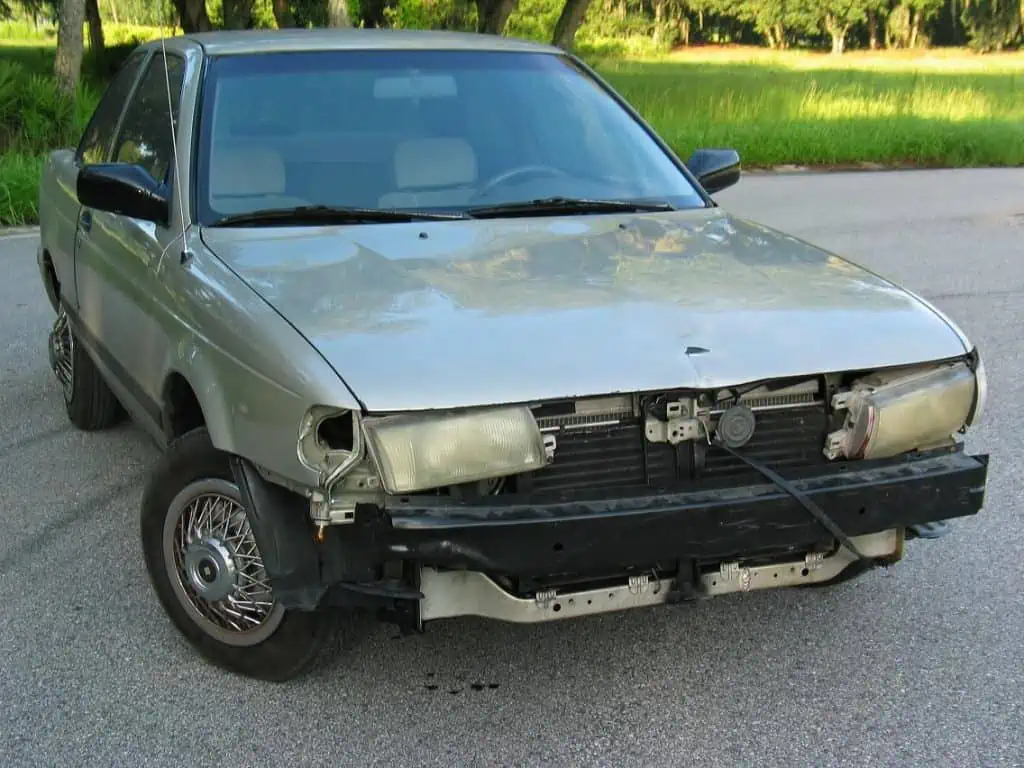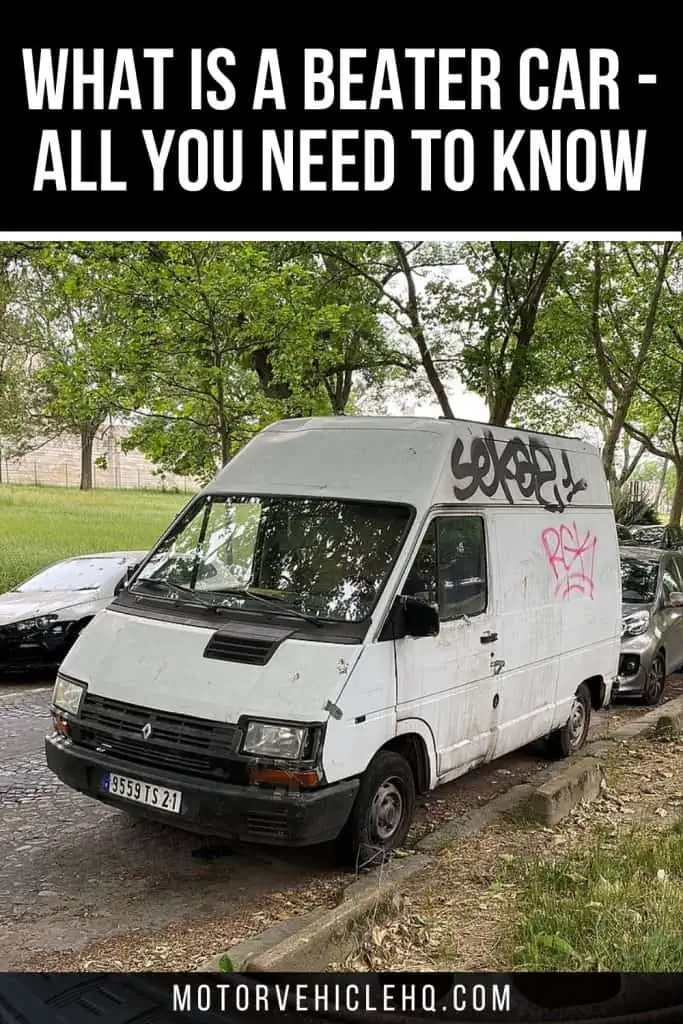We all love our automobiles, but driving on public highways can be risky for your prized possession. Your favorite car is at risk from rough roads, careless drivers, and confined parking spots. The use of a beater car is here.
A beater car is essentially a vehicle that you utilize carelessly for your daily needs. You can simply drive it and do whatever you want with it whether it’s on the tarmac or in the dirt. You can learn everything you need to know about owning a beater car here.
A Beater Car: What Kind of Car Is It?
What exactly is a beater car, then? It’s a slang term for a vehicle you use frequently but without any maintenance. Typically, you would like your car to be in good condition, with a smooth engine, sleek paint, and a tidy interior. We all adore it, but as we are all aware, keeping an automobile in top condition is not inexpensive.
With a beater car, this is not the case. The whole goal of a beater car is to allow you to drive it every day, perhaps wreck it, and just not give a damn about how it looks or operates. It only needs to turn on in the morning and complete the task at hand.
Your selected vehicle can remain in the garage throughout this time. Instead, you can utilize it when you know you’ll be traveling on smooth roads or when it’s required, away from the perils of the outside world.
How Do You Identify a Beater Car?
Although there isn’t just one type or model of beater car, they do have several traits. One benefit of this vehicle is its affordable price. It will be older than a few years.
This type of vehicle can be purchased with cash since it is probably only worth a few thousand dollars or less. It must be a true gem of a car if you’re looking at something around $2000 because that’s very expensive for a beater.
Although $2000 may seem incredibly little and inspire some dread in you, keep in mind that the motor industry has been producing outstanding vehicles for decades.
The Toyota Corolla is the most popular automobile in history, so you ought to have no trouble finding a reliable early 2000s model in that price range. Are miles high? Maybe. But you won’t have too much trouble if you have a sturdy body and an engine.
A typical beater car by IFCAR. In essence, a beater car is a car that you use irresponsibly for your daily necessities. On the asphalt or in the mud, you may just drive it and use it any way you like.
The main advantage here Your monthly budget won’t need to be considered because you won’t be making payments. Your primary costs will be petrol and insurance.
A decent beater car has probably already reached that point of depreciation, so you’re not likely to purchase it as an investment or something you plan to sell later.
Why Is Owning a Beater Car a Good Idea?
Sounds nice, doesn’t it? If you’re still not persuaded, consider the following additional arguments in favor of purchasing a beater:
1. They are Pretty Cheap to Buy
Although technically a new car can also be a beater car, most people purchase used vehicles that are already in less-than-ideal shape to use as their beater cars. Why not just get something cheap and run it to the ground since you won’t be caring for it anyhow?
As saving money is essentially their sole purpose, it makes sense. The majority of consumers normally spend under $2,000 on beater cars. Although it might not seem like much, you have many possibilities.
Trying to find a sedan? 1990s Civics and early-2000s Focuses spring to mind. Searching for a more American-sounding phrase? There are several Chevys and Pontiacs available on the market. Or do you have any off-roading or hauling plans? On Edmunds, we came across a few enticing Chevy Blazers and Silverados.
They will undoubtedly not be in excellent shape and have traveled at least 200,000 kilometers. But if you’re just going to run it into the ground, who cares? Also, if you’d like, you can raise your budget. Invest as much money as you want as long as you don’t mind daily pounding that car.
2. It Is Cheap to Fill Them Up
Yeah, so technically speaking, older vehicles use more petrol. They tend to consume more fuel due to either outdated engine technology or worn-out engine components, therefore this is a problem.
You don’t need to worry about what kind of fuel you feed it, though. Choose the least expensive fuel at the pump, and you’re ready to go. No need for that expensive gasoline; save them for your brand-new, sparkling vehicle.
Or perhaps use the money to purchase cheap air fresheners from a gas station to cover up the smell of the previous occupant.
3. Cheaper Insurance Rates
Although insurance is required, if you have a beater, you won’t have to pay for the full amount of protection. Although having full coverage isn’t required unless you lease or loan a car, it frequently makes you feel more secure if you do when driving a new automobile.
This is not necessary when purchasing a used beater car in cash, and why would you? The insurance will cost a lot of money, and should the automobile be totaled, the payment will be far less than what you pay the insurance company.
4. They Have a High Resale Value
Car buyers frequently take resale value into account. When you first purchase a new car, you could lose anywhere from 10% to 30% of your investment. In contrast, depending on the make and model, used cars that are still relatively fresh will lose 40 to 70 percent of their value after five years.
This is what occurs when you buy practically any car, even if at the time of writing, second-hand cars are rising in value because of supply-chain issues.
A beater car is designed to be driven every day, possibly wrecked, and with little regard for how it looks or performs. It merely has to be turned on in the morning to do the job.
But, due to their state, beater cars are already ridiculously inexpensive. Can you lose any more weight? Furthermore, you already have plans to run them down. or, to be precise, to the scrap yard.
As a result, you won’t need to be concerned about resale value. The goal is often to keep driving it until it breaks down, at which point the automobile is scrapped at a junkyard. Depending on the car, you might expect to receive anything from $100 to $300.
5. Reduced Costs on Repair
There are numerous other benefits to owning a beater car. Yet ultimately, it comes down to saving money. Door dings, bumper dents, or scratches? If the car is still able to run, who cares? You are not required to pay for costly car detailing and coatings or body repairs.
What about the maintenance services? You only need an occasional brake pad replacement, an oil change, and fresh filters. Why spend extra if the car starts and is still safe to drive? You can always turn up the radio’s volume to block out the odd noise the engine is making. I used to use my beater in that way.
Even better, performing maintenance and repairs on your own will help you save money. Older cars are easier to work on and don’t need a cutting-edge computer only to diagnose problems. Granted, you’ll still need the correct equipment and to watch a few YouTube lessons, but you can typically handle most repairs on your own.
6. There Is No Limit to How Rigorous You Can Drive It
Saving money has been a major theme in the other reasons mentioned above. The joy you can have from having a beater car is the final and best reason.
The ability to drive beater cars as hard as we want is what we car aficionados appreciate most about them. Yes, driving a newer, more costly car is more pleasant. There are, let’s say, “spirited drives” as well as consequences.
When you push the engine, parts typically wear out more quickly, and you also run the risk of damaging anything. Yet you can do whatever you want with beater cars. standing to begin? Nice. Do you want to burn out? Burn those rubbers, then. You want to rev the engine to your house. You’re welcome to stay with us.
The concept is that you may drive them as you like because they are inexpensive to purchase and don’t care about the condition of the vehicle. Of course, within the bounds of the law. We don’t support disobeying traffic regulations.
A Beater Car Buying Guide: What Should You Consider Before Your Next Purchase?
The next stage is to locate a beater car now that we’ve probably persuaded you to buy one. Here are some of our suggestions before we share some of our recommendations:
1. Know Your Objectives
Knowing your objectives will help you control your expectations for this beater car, which is the first thing you need to accomplish. You don’t need to be choosy; simply choose a vehicle that matches your budget if you want a vehicle to drive around in and have fun in.
But, if you intend to use this beater for several years and plan to drive it every day, you’ll need a vehicle in good shape. You should also consider the following other advice in this situation:
2. Verify the Mileage
Although the car’s mileage doesn’t necessarily indicate its condition, lower mileage vehicles typically live longer. The average automobile can travel 200,000 miles before needing significant maintenance, but dependable models can go up to 300,000.
A beater with fewer than 200,000 kilometers on it merits further inspection. But as long as it has less than 250,000 kilometers, it should be fine. Of course, there are more factors you should look into:
A small family beater car by IFCAR. You are unlikely to buy a decent beater car as an investment or something you intend to sell later because it has likely already reached that stage of depreciation.
3. Verify the VIN
Vehicle Identification Number is referred to as VIN. Every car has a 17-digit alphanumeric number that describes the make, model, and other fundamental specifications of the vehicle. It functions as a tracking number for every car, sort of like a birth certificate.
The VIN might also provide information about the car’s past. There are websites where you can look up VINs, and if the information is in their database, they will give you the history of the vehicle, including any accidents or damage reports.
As the VIN is not a particularly private piece of information, you might ask the seller to provide it in advance. Most likely, they won’t mind. Go away if it turns out that the VIN doesn’t match the stated car’s manufacturer and model. Avoid it at all costs.
4. Verify the Vehicle’s History
You probably won’t find a detailed history and service record for a beater car that costs less than $5,000. You should yet request it and examine it. To determine whether the car has been well-maintained or not, a history and service record that is at least fairly comprehensive will be helpful.
If you managed to locate a vehicle with a complete history and few previous owners, that vehicle is undoubtedly a hidden gem, and you should monitor it carefully. You’ll be forced to do a thorough inspection if the ownership history is a little shaky:
5. Pay Attention to Rust or Frame Damage
Rust is problematic because it spreads as soon as it appears. Every car will rust, but to get you started, you should look for the one with the least amount of rust.
The body’s rust patches are not a major issue. You might be able to fix them yourself as well. The important thing in this situation is to check underneath to determine if the frame has rusted. Rust on the frame might jeopardize the vehicle’s structural integrity and safety.
Not a deadly trap, but an affordable car that we can drive every day. You might wish to turn around if the rust underneath appears to be considerable. If the rust doesn’t flake off when you touch it, it is usually acceptable. You can still fix it yourself if the rust is mild and limited to the body.
Also, look for frame damage down there while you’re there. Examine the frame or chassis for any bending or damage. A poor frame can damage the structural integrity of the car, which is something you don’t want. Lastly, look for oil leaks. These will further harm the powertrain and are expensive to fix.
6. An Extended Inspection of the Car Is Necessary
Remember to keep an eye out for corrosion. The less rust there is, the easier it will be to cope with. Check the exterior of the automobile, then the accessories. Minor issues with accessories, such as a broken window or the interior light, can generally be overlooked.
Nonetheless, pay attention to the crucial components, such as the suspension, external lights, and engine. While driving the car, listen for any odd noises. Although beater cars aren’t always in pristine condition, you still want to pick one that’s in excellent enough shape to serve as a nice foundation.
Bring a dependable mechanic with you or look for a reputable pre-purchase inspection service if you’re unsure of your car expertise. They range in price from $150 to $250, but they can give you the whole list of issues the automobile has.
7. Avoid Rushing It
We are aware of your excitement at the idea of owning a carefree vehicle and your eagerness to purchase a beater, but the most important thing is to proceed slowly. It’s crucial to develop a list of the features you need in a beater, then look for a vehicle that checks off each item on the list.
The Lancia Beta beater car by Vauxford / CC BY-SA 4.0. The majority of individuals buy old automobiles that are already in less-than-ideal condition to using as their beater cars, even though technically a new car might also be a beater car.
For instance, if you locate a car that meets almost all of your criteria but the air conditioning is broken, don’t buy it right away. On a sweltering summer day, you don’t want to be confined to a car without air conditioning, do you?
These days, there are several internet car marketplaces; you should search them all. Your beater soul mate exists somewhere, we’re positive about it.
Which are the Best Recommendations for a Beater Car?
We’ll give you some brief suggestions now. Here are the top three vehicles you ought to think about, along with a few others worthy of mention:
1. The Honda Civic
It is a Civic. What more could you ask for in a beater car if it will keep running forever? They normally have a lifespan of 200,000 miles before experiencing significant troubles, although it’s not unusual for them to live up to 300,000 miles before experiencing significant issues.
The early to mid-90s vehicles are what you want, though, and you should stay away from the models from the 2000s because they have a lot of issues, such as transmission, air conditioning, and tire wear issues.
A nice 1998 Civic DX coupe with only 160,000 miles was available for slightly under $5,000. But, there are many options available that are less expensive and will meet your budget. To find out more, see our article on the Honda Civic’s dependability.
Although several cars are less expensive than the Civic, we prefer it because it is a reliable, enjoyable car to drive.
2. The Ford F-150
Do you need something more robust? The Ford F-150 will most likely satisfy your needs then. To be quite honest, we wanted to suggest the Toyota Tundra or the Tacoma. The trucks will continue to operate till the end of time, just like the Civic. But, because of their immense popularity, it is impossible to find these cars for less than $5,000.
The F-150 is therefore a close second. Older F-150s are capable and dependable even though Ford is rarely at the top of the list of most trustworthy automakers. The NHTSA has received concerns about some of the greatest model years, which are those from 1993 to 1996.
Costs for a good specimen range from $10,000 to $18,000. There are many of them, though, that is less expensive than that, and ones under $5,000 are more prevalent than those in the tundra. You won’t find anything with fewer than 200,000 miles on the odometer at this price, so keep that in mind.
3. The Grand Cherokee – Jeep
Can we persuade you to choose a Jeep Grand Cherokee if you prefer an SUV to a pickup truck? Most of the Grand Cherokees from the 1990s and the first decade of the 2000s cost less than $5,000. Some have also been beneath the $2,000 threshold.
Given that they are reliable offroaders with good capability, we’re not sure why they’re so inexpensive. Hey, it’s excellent for those of us seeking a beater, right?
Given that the first-generation models (1999-2004) had more faults, such as fuel tank leaks and transmission problems, you might want to look for the second-generation model. The second-main generation’s problem, however, is related to seat belt mountings.
Moreover, the seat warmer on the 2001 model would occasionally become overheated to the point where it could catch fire. Other than that, the Grand Cherokee from the early 2000s appears to be extremely dependable. It has a slightly above-average rating of 3.8 out of 5 stars on RepairPal.
Other Commemorative Mentions
Naturally, there are more choices. There are several affordable, dependable vehicles available for low prices; here are our honorable mentions, along with the best model year for each:
We, car connoisseurs, love beater cars because they allow us to drive them as fast as we want. It’s more enjoyable to drive a newer, more expensive car. Let’s call them “spirited drives” and they have consequences.
- The Toyota Corolla (1997 & 2008)
- The Toyota Camry (2003 to 2005. The 2004 model is always perceived as the best)
- The Ford Focus (1998 to 2007)
- LeSabre by Buick (2005)
- The Honda Accord (1990 to 1997)
- Silverado 1500 by Chevrolet (1999 to 2005)
A Beater Car: Is It Worth It?
A beater car is more than worthwhile if you subscribe to the school of thinking that holds that a car’s purpose is to transport a person from Point A to Point B. You can buy a dependable car for thousands,
if not tens of thousands of dollars less than what you’ll spend on a new vehicle, at the expense of aesthetic appeal and some ancillary functionality. Setting your sights on a beater car has a lot of benefits.
Have a limited budget but want to purchase a vehicle? The best car for you might be a beater car! You are sure you have learned almost everything you need to know about beater cars in this post, starting with an explanation of what one is, why you should purchase a beater car, the advantages beater cars offer, plus a lot more!
What Things Should You Watch Out for When Driving a Beater Car?
Recall how we claimed that a used car and a beater car are not the same things. That is a crucial point. Undoubtedly, a beater is used, but it’s also reliable. Whatever its age or condition, a decent beater needs to work smoothly because that’s why you’re buying it.
This does not imply that your beater car will turn out to be a hidden treasure. You should make sure you have all of it taken into account before you buy it because it might need some maintenance or have some rust spots.
If it requires numerous repairs to be roadworthy, getting into it is not worth it. It’s one thing if the tires are a little worn out and the trim is rusty, but if it can’t pass an inspection to be roadworthy, then all the money it was supposed to save you will have to be paid for again.
Use a critical eye if you encounter a car that seems too good to be true. While $2000 is a fair price for a used car, you should exercise caution when purchasing a newer vehicle for less than $500.
A beater car isn’t a beauty queen, but you’re paying for the fact that it still operates. A lesser price should caution you more.
There can be more issues with the car than it is worth fixing. Let’s face it, we’re not all mechanics, so if you can’t diagnose some issues after a test drive, skip the “too good to be true” selections and choose the more logical ones.
A beater car by Jarek Tuszyński / CC BY-SA 3.0. This does not necessarily mean that your beater car will turn out to be a hidden gem. It might need some upkeep or have some rust areas, so you should make sure you have everything considered before you acquire it.
Get the Kelley Blue Book value so you may contrast the asking price with what the market will bear. Ask the seller to explain if their value is much less than the Blue Book. If there isn’t a valid reason, that can be a warning sign.
Be wary of advertisements that might warn you right away of issues. Although finding a beater car on websites like Craigslist is very popular, doing so can also be perilous. Industry insiders will warn you to be wary of those carefully written and thorough advertisements.
The more pleasant the car sounds, the higher the likelihood that there is a problem. Common phrases used by those advertising genuine beaters include “2005 Ford Taurus, runs good, $1,000.”
To draw attention away from whatever might be amiss, those who have something to hide will go into great detail about the car and its characteristics. Once you’ve gotten in touch with the vendor, trust your instincts.
The mileage and history of your potential beater car are the first things you should look into. You might wish to avoid the vehicle if it has 500,000 kilometers on it.
If properly maintained, a car should be able to travel up to 200,000 miles and beyond. Nevertheless, as soon as it exceeds that 200,000 mark, problems become much more likely, so take caution.
Another useful thing to know about a car is its past. The ideal vehicle should have only had one owner. The likelihood that the car will endure a long time rises with fewer owners because there are fewer chances that someone neglected to take good care of it.
Anyone operating a beater car should be aware that it is not a high-end vehicle. You’ll have to accept some feature limitations.
Tears in the upholstery, a malfunctioning air conditioner, washer fluid that squirts out randomly, and other issues are all very frequent. However, you can ignore the optional features as long as it’s still street-legal and roadworthy.
What Should I Expect to Pay for a Beater Car?
The majority of people will advise you to spend no more than $2,000 for a beater car, but we believe $5,000 is still a decent sum. In this approach, you get an automobile that is marginally in better shape but not so much so that you feel awful about calling it a beater car.
A Beater Car: Is It a Necessity?
Everyone, in our opinion, deserves to own a vehicle they can use every day without giving it any thought. Why not have something to drive and throw away every day while your gorgeous automobile stays clean at home? Keeping a car in top shape is expensive.
Of course, there are situations in which you may not require a beater car. For instance, a beater car is not going to be what you want if you want a car that is completely dependable and comfy. Although they might get you where you need to go, the A/C or another accessory might go down en route.
Also, it’s possible that you only have room for one automobile at home or that you desire only one vehicle to do everything. You would be better off in this situation purchasing a newer, more functional vehicle.
The old beater Sentra car by FlyByFire / CC BY-SA 3.0. Beater cars are old, high-mileage vehicles that are inexpensive, still drivable, and functioning, ranging in price from $500 to $2,000. They are suitable for people who don’t give much care about how lovely the car is and whose major worry is traveling from point A to point B.
If you simply can’t stand a car that isn’t in immaculate condition, that is another reason not to purchase a beater. On my car, I can overlook little dings and scrapes, but perhaps you’re not like me. Get something fancier if you simply can’t overlook this, even in a beater.
What Is the Lifespan of a Beater Car?
Because it depends on the state of the car when you buy it, we are unable to answer. They can fail after only a year of driving or they might persist for 50,000 miles.
Hence, knowing your objective and controlling expectations is crucial. You can find the ideal beater for you if you use our purchase advice for beater cars.
Advice for Beater Car Owners
It’s usually best to carry a safety kit and some tools in the car because they’re not in great shape. You will therefore be able to assist yourself if the automobile breaks down.
Also, we advise performing routine maintenance like brake pad replacement, oil and filter replacements, and more.
Even if the whole goal of beater cars is to just run them to the ground, you still want to keep the vehicle roadworthy. You should perform routine maintenance on the beater if you intend to drive it for an extended period.
The Conclusion
In conclusion, a beater car is an inexpensive vehicle that you may use every day without having to worry about its general condition. You should consider one if you want a car that you can drive carelessly even if it might not be for everyone.
Beater cars are low-priced at $500 to $2000, ancient, high-mileage vehicles that are still drivable and functional. They are appropriate for persons whose main concern is getting from point A to point B and who do not give much thought to how attractive the car is.
If you choose to purchase a beater car, take your time, don’t chase after incredibly low costs, take a driving test, and, most importantly, consult a professional mechanic.


Jim Wicks is the founder of MotorVehicleHQ. With over two decades of experience in the automotive industry and a degree in Automotive Technology, Jim is a certified car expert who has worked in various roles ranging from a mechanic, car dealership manager, to a racing car driver. He has owned more than 20 cars over the past 15 years. Ask him about any vehicle you see on the road and he can tell you the make, model and year. He loves the aesthetics of all things cars, and keeps his vehicles in pristine condition.
In his free time, Jim enjoys getting his hands dirty under the hood of a classic car or taking long drives along the country roads. His favorite car? A 1967 Shelby GT500, a true classic that, according to Jim, “represents the pure essence of American muscle.”







